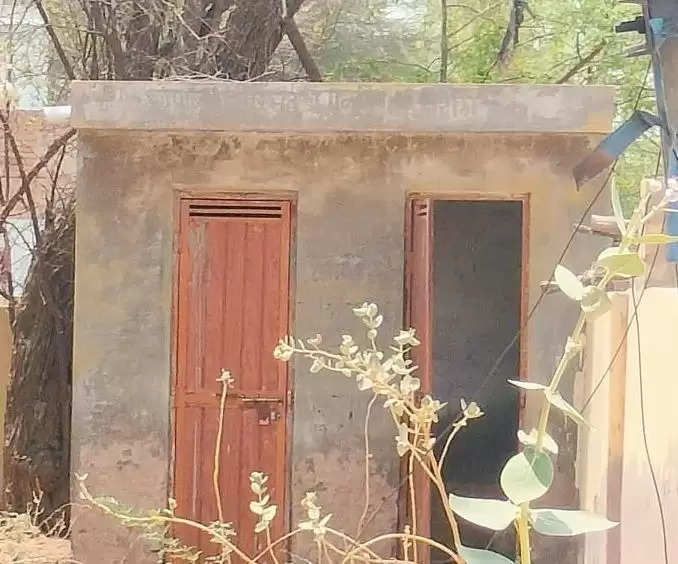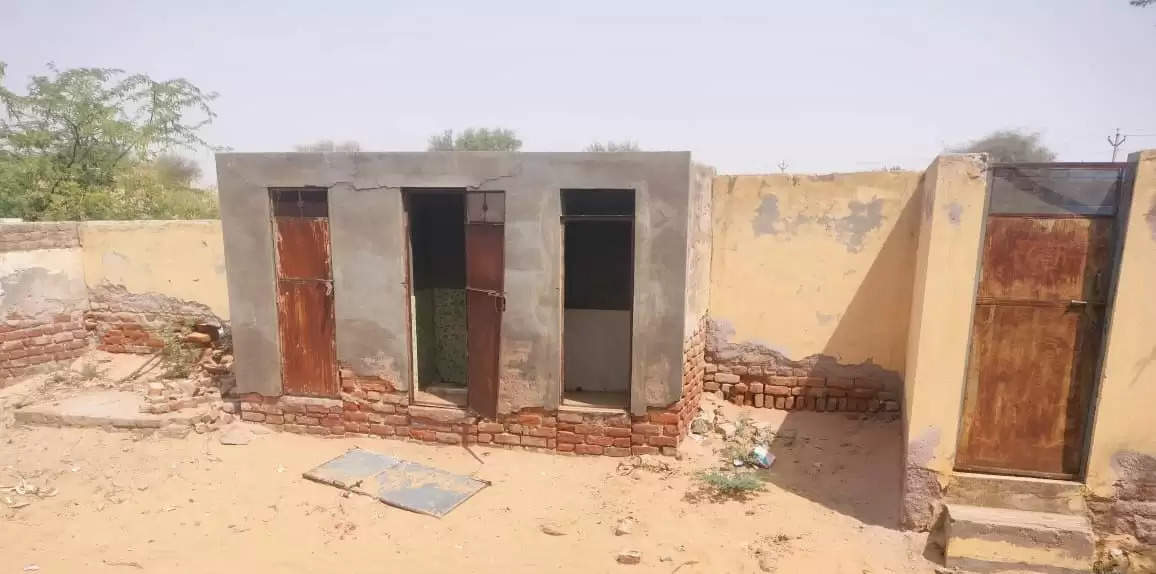Inadequate Funds, Water Scarcity Hinder Sanitation Goals
How successful is the goal of a toilet in every household in villages? To build clean villages, we must work together to advance towards a healthier and cleaner India, says Suhani
Udaipur, November 1, 2024 - Last month, a national newspaper had published a report on the National Family Health Survey, stating that 82.5% of families in the country now have access to toilets, compared to just 45% in 2004-05. This indicates a significant reduction in open defecation across the country, leading to a decrease in health risks and newborn mortality rates.
This progress is commendable in a vast and diverse country like India. However, there are still many rural areas where not every household has a proper toilet. This issue is compounded by various social and economic factors. The funds provided by the government for toilet construction are insufficient, making many families feel unable to build toilets. Additionally, water scarcity poses a major obstacle. Rajpura Hudan village in Lunkaransar, Rajasthan, exemplifies this situation.
In this village, many homes lack proper toilet facilities, causing significant distress among residents. A 35-year-old woman named Sunita shares that her home still has a temporary toilet because they cannot afford to build a permanent one. She says that they have applied for funds at the panchayat level, but have not yet received any assistance. Similarly, 45-year-old Teeja Devi points out that the government provides Rs 12,000 for constructing a toilet, while the minimum cost for a permanent toilet, including a septic tank and water tank, is around Rs 30,000. Many families, despite receiving government funds, find themselves unable to construct toilets due to the financial gap. She advocates for increasing the government’s financial assistance to enable poorer families to build toilets.

Unstable Temporary Toilet
Bhamvri Devi, 30 years old, says that despite filling out the application, she did not receive funds for toilet construction, so she had to build a temporary toilet with her own money. It lacks water supply and has unstable walls. As a result, there is always a risk of it collapsing during heavy rains. She adds that most households in Rajpura Hudan have makeshift toilets due to financial constraints, which forces many men and young people to defecate in the open.
Another resident, 70-year-old Lichhama Devi, expresses happiness about her temporary toilet, as it saves her from going out into the open, which used to be a significant hardship for women. She recalls that women and girls had to go for defecation before sunrise or after dark, often leading to inadequate food intake and health issues. Young girls faced the most difficulty during menstruation. However, having a toilet at home has alleviated many of these inconveniences. She believes that if the government provides full funding for toilet construction, every household in the village would have a proper toilet, as everyone understands its importance. Unfortunately, a lack of funds remains a major barrier, forcing several families to take loans for this purpose. They also had to spend Rs 10,000 to make this temporary toilet at home which does not have even a water tank.
Lichhama’s neighbour, Gudiya, appreciates the government’s initiative to ensure toilets in every household, especially benefiting women and girls, which positively impacts their health.
Water Scarcity
Rajpura Hudan is located 90 kms from Bikaner district and about 18 kms from Lunkaransar block. According to the 2011 Census, the village has a population of approximately 1,863, predominantly from Scheduled Castes. Most men work in agriculture or as daily labourers, and the village faces significant challenges in terms of basic amenities. Water scarcity, particularly in this region, even after construction of toilets remains a crucial issue. A local teenager, 16-year-old Suman, mentions that while the school has a toilet, it is unusable due to water shortages, leading girls to skip school during menstruation. Sunita, a 12th grade 18-year-old girl, highlights that the school has separate toilets for boys and girls, but the lack of water makes them unusable, forcing many girls to drop out of school.
On August 1, the Ministry of Jal Shakti reported that more than 10 crore individual household toilets have been built across the country from 2014 to 2020. On April 3, 2018, the then Rajasthan government declared all 43,344 villages, along with 295 panchayat samitis and 9,894 gram panchayats, open defecation-free. Which indicates that all houses in the villages have toilets. However, this project has not achieved 100% coverage. More than 60% of India’s population lives in rural areas, making sanitation not just a health issue but also a matter of dignity, safety and environmental health. The lack of safe toilets poses a serious health and safety risk, particularly for women, girls and children.
Usability and Maintenance
The Swachh Bharat Mission is a historic initiative for constructing toilets in rural areas, providing financial aid for construction and establishing sanitation committees at the village level, along with awareness campaigns. However, inadequate funds and water scarcity continue to hinder villages like Rajpura Hudan from achieving their sanitation goals. This indicates that simply constructing toilets is not enough; their usability and maintenance are also crucial. Coordinated efforts at the community level, alongside government support, are essential to realise the dream of proper toilets in every home. Local NGOs can play a significant role in this effort.
Ultimately, to build clean villages, we must work together to advance towards a healthier and cleaner India.
Charkha Features
To join us on Facebook Click Here and Subscribe to UdaipurTimes Broadcast channels on GoogleNews | Telegram | Signal



